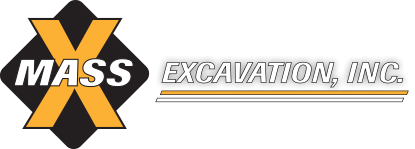In Alaska’s demanding construction market, two companies faced a hidden crisis. Davis Constructors & Engineers (DC&E) and Mass Excavation (MassX) were known for excellence, bringing in $200 million yearly and managing 850 pieces of equipment. Below the surface, problems were brewing.

Building Better Systems: A Construction Equipment Management Success Story
Mass Excavation and Davis
Before working with Lonewolf, we had no asset management systems or structures in place. Our equipment costs weren’t being managed, and it was the same story every month – operations needed more equipment while our maintenance team was overwhelmed with field-calls. Craig helped us implement a clear system that gave us complete visibility of our fleet costs, utilization and shop management.
Justin Shields, General Manager
Mass Excavation

The Crisis Emerges

It started when two key employees left unexpectedly. Their departure revealed a troubling truth: the companies were making multi-million dollar fleet decisions based on gut feeling rather than solid data. Across their massive fleet of 400 heavy equipment pieces, 275 support units, and 175 licensed vehicles, problems were multiplying.
The impact hit job sites first. Project managers played a costly guessing game with equipment deployment. Too often, they discovered equipment problems after crews were already on site and waiting. Emergency repairs and last-minute schedule changes became the norm, eating into profits and straining client relationships.
The situation in the shop had reached a breaking point. Mechanics rushed from one emergency to the next, seemingly putting out endless fires with no time to perform the routine maintenance that is crucial to prevent future breakdowns. The same equipment kept coming back because repairs were rushed. Equipment sat idle for days or weeks waiting for parts, fueling the tension with operations.
But it was the financial reporting that revealed how deep the problems ran. Despite long hours and dedication from the accounting team, equipment cost reports were 60-90 days behind. In fast-moving organizations managing hundreds of millions in projects, leaders could not afford to wait that long. The combination of project delays, reactive maintenance, costly rework, and delayed reporting was a ticking time bomb.
Assessment Revealed Massive Cost Savings
Solutions with Instant Cost and Time Savings

Lonewolf Consulting stepped in to assess what we call the ‘equipment triangle’—the critical connection between operations, equipment, and accounting that drives equipment management. We went into the field, visited the shop, and reviewed accounting process.
What we found surprised everyone. Equipment was being over-serviced, wasting precious time and money. Office processes were bogged down with unnecessary steps and complex cost codes. The shop had no clear plan or work process, keeping them stuck in fire-fighting mode. Worst of all, each department worked in isolation, making company coordination nearly impossible.
Working closely with leadership, we created a roadmap for immediate and long-term improvements. We focused on systematic equipment inspections, streamlined reporting, better data collection, clear shop workflows, and smart capital planning. Most importantly, we made sure all departments were working together and moving toward the same goals.
Quick Wins and Lasting Change

The improvements showed immediate results. By eliminating unnecessary maintenance in one category of equipment alone they saved $210,000. Streamlining data collection reduced the load by one full-time position, giving the overwhelmed accounting team some much-needed relief.
But the real transformation came from the hands-on support where we helped them implement new programs. A new inspection program caught problems before the equipment caused delays on the jobsite. Weekly check-ins and better cost reporting gave managers clear insights into their equipment’s performance. For the first time, both companies could make fleet decisions based on real data instead of guesswork.
Seeing these early wins, the companies asked us to stay on and support broader transformation efforts. What began as a focused engagement quickly evolved into a longer-term partnership as leadership saw the value of deeper collaboration. We shifted into supporting program integration and change management at the shop level, developing a new internal rates program, ERP migration readiness, one-on-one coaching, hands-on training, and ongoing guidance across departments. As trust grew and momentum built, our scope expanded—most notably into accounting.
Six months into the fiscal year, month-end reporting was still stuck in December—three full months behind. Financial visibility had stalled, and key decisions were being made without current data. We stepped in to guide the team, set clear expectations, and drive accountability. In just 90 days, they closed six month-ends and got fully back on track. What had been a growing liability was replaced by a reliable cadence, with restored trust in the numbers—essential for leading a fast-moving organization.
Together, we continue to improve reporting systems, clarify roles and responsibilities, simplify cost tracking, and establish weekly routines to keep everything running smoothly.
We didn’t just fill the gap left by departing employees – we built something better. DC&E and MassX now have a solid foundation for long-term success: regular equipment inspections, structured workshop planning, performance tracking, engaged and well-trained teams, clear communication between departments, fast and accurate cost reporting, and smart forward-thinking fleet management.
These improvements have strengthened both companies’ reputations and built more capable teams. By moving from reactive to proactive leadership, they’ve changed how they do business and reinforced their legacy of excellence.